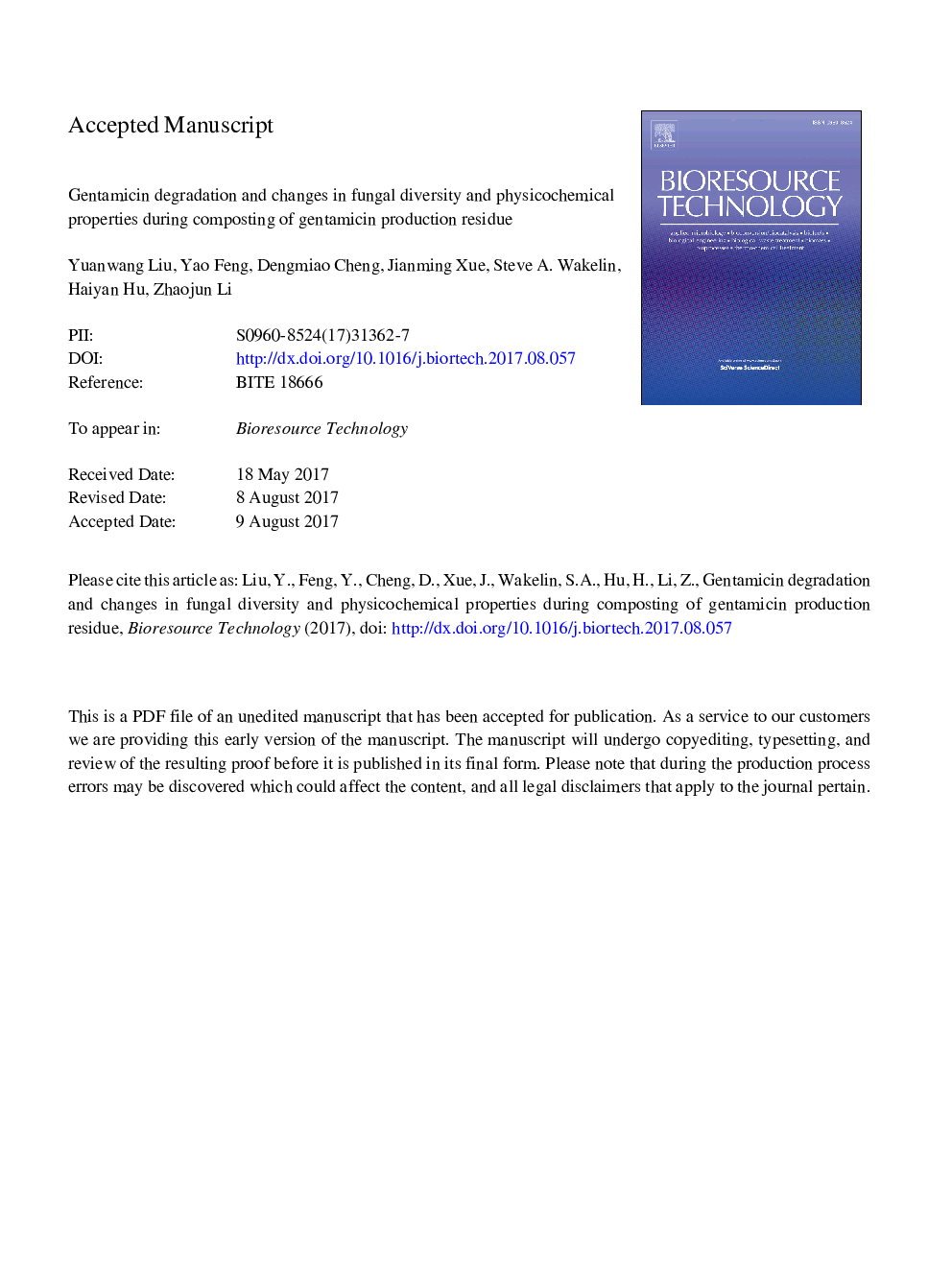| Article ID | Journal | Published Year | Pages | File Type |
|---|---|---|---|---|
| 4996605 | Bioresource Technology | 2017 | 37 Pages |
Abstract
An indoor co-composting of gentamicin fermentation residues (GFR) and lovastatin fermentation residues (LFR) inoculated with gentamicin-degrading Aspergillus terreus FZC3 was conducted to remove gentamicin residues. The results showed that treatment MFZC3, consisting of a 10:1 blend of GFR and LFR (w/w), had the longest thermophilic phase (7 days), quickest gentamicin degradation (t½ = 4.4 days), and relatively higher gentamicin degradation percentage (96.7%) at the end of composting. Addition of Aspergillus terreus FZC3 affected fungal diversity of the compost and improved the removal of gentamicin during composting of the 15:1 GFR:LFR blend. By analyzing the variations of gentamicin and fungal community dynamics, it was speculated that Aspergillus terreus could accelerate gentamicin degradation. The microbial community and dynamic during composting were deeply affected by the physicochemical properties, and vice versa. In conclusion, co-composting of GFR with LFR could be a promising technology to solve the problem of gentamicin residue in GFR waste.
Related Topics
Physical Sciences and Engineering
Chemical Engineering
Process Chemistry and Technology
Authors
Yuanwang Liu, Yao Feng, Dengmiao Cheng, Jianming Xue, Steve A. Wakelin, Haiyan Hu, Zhaojun Li,
